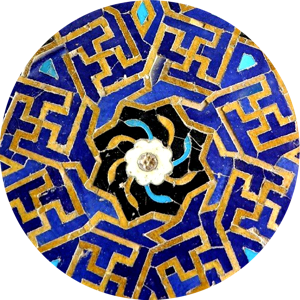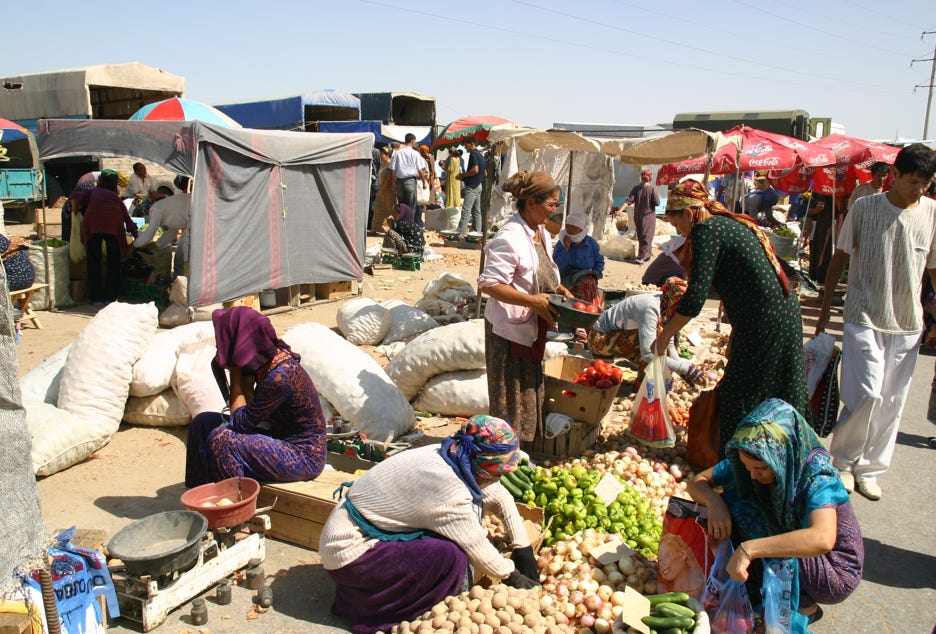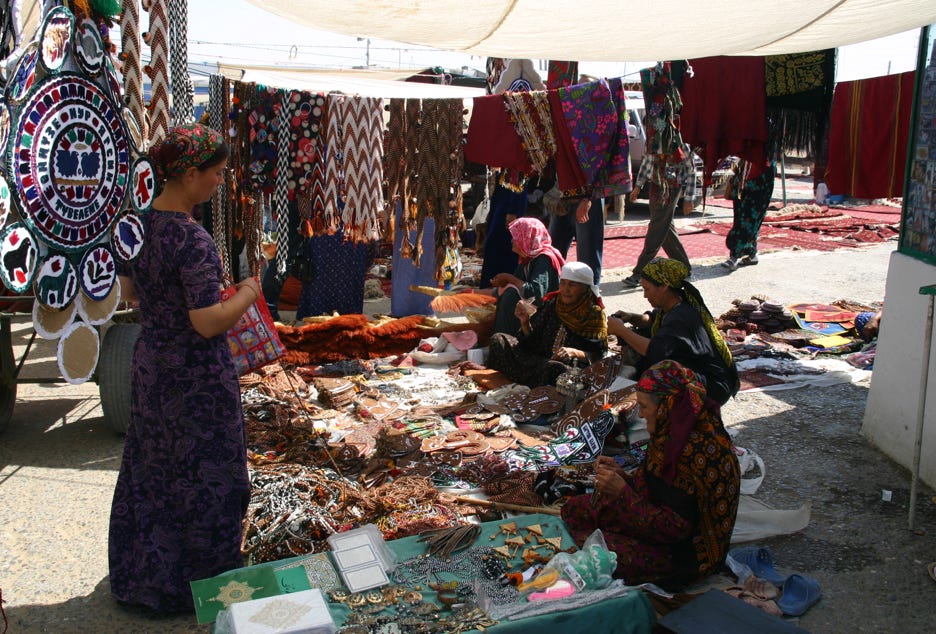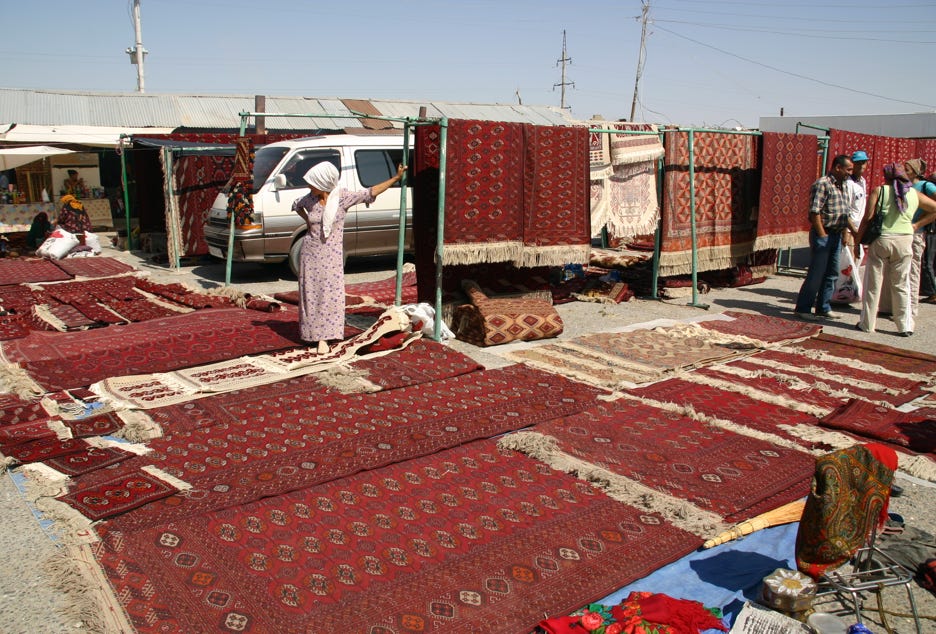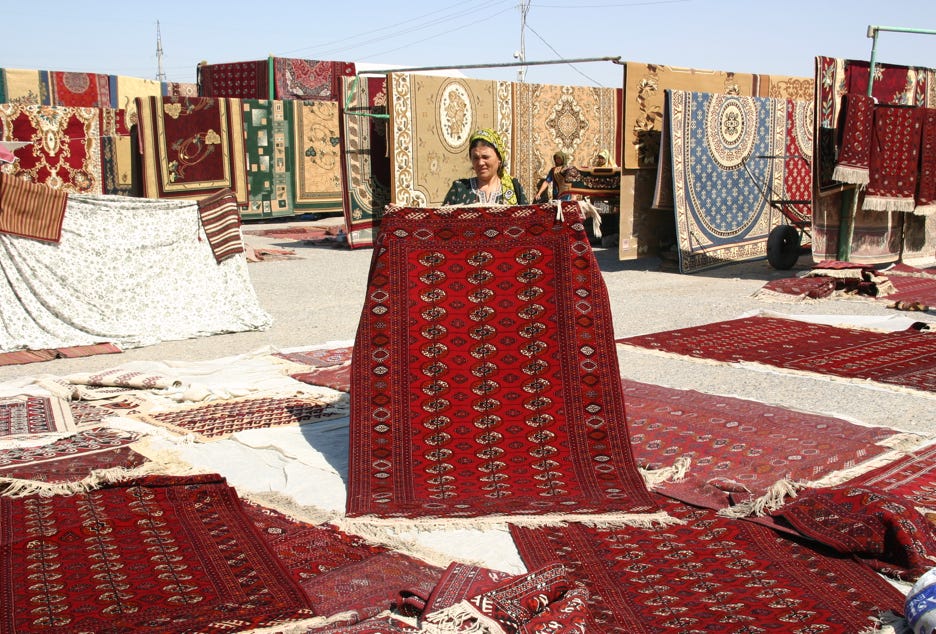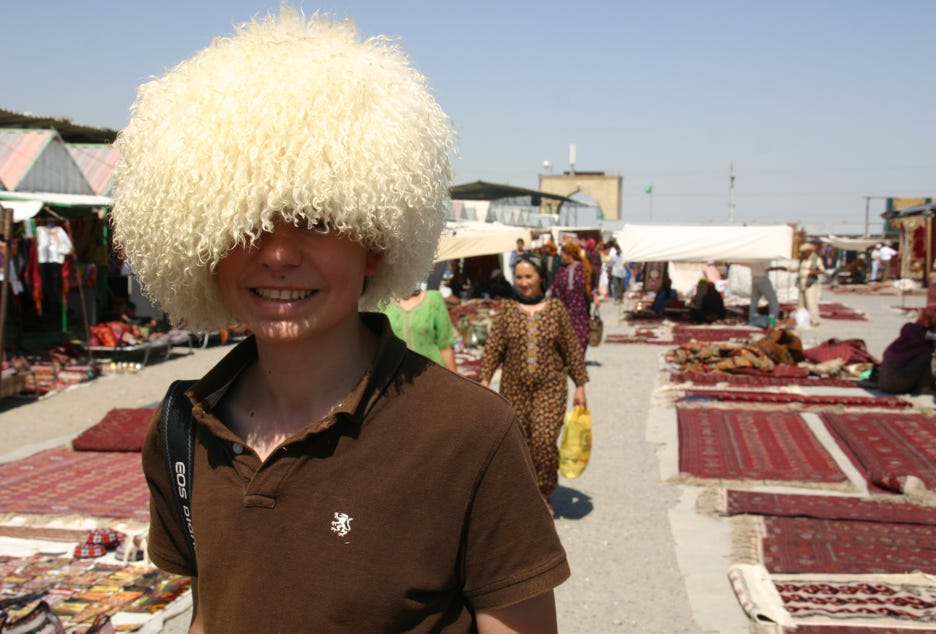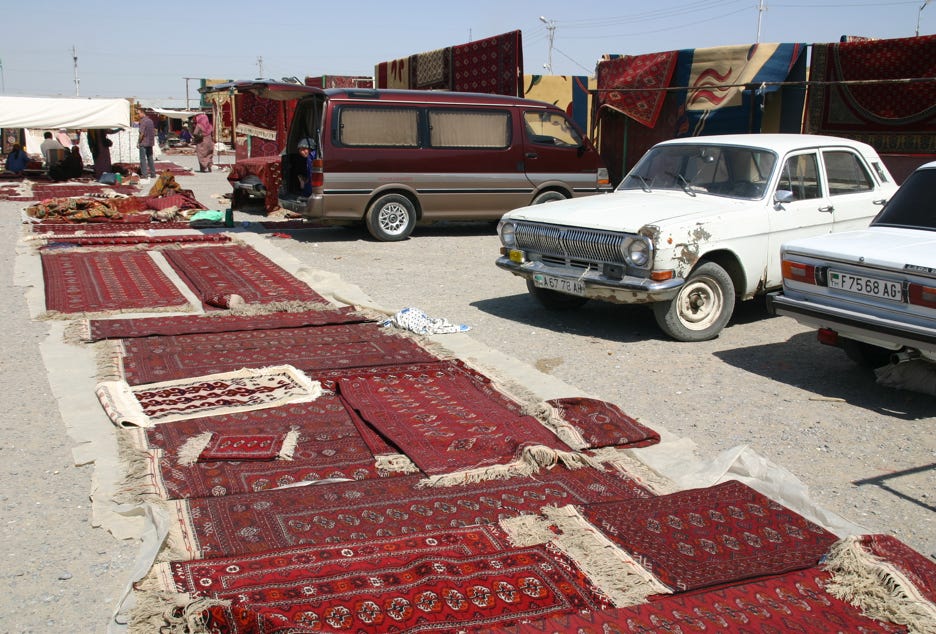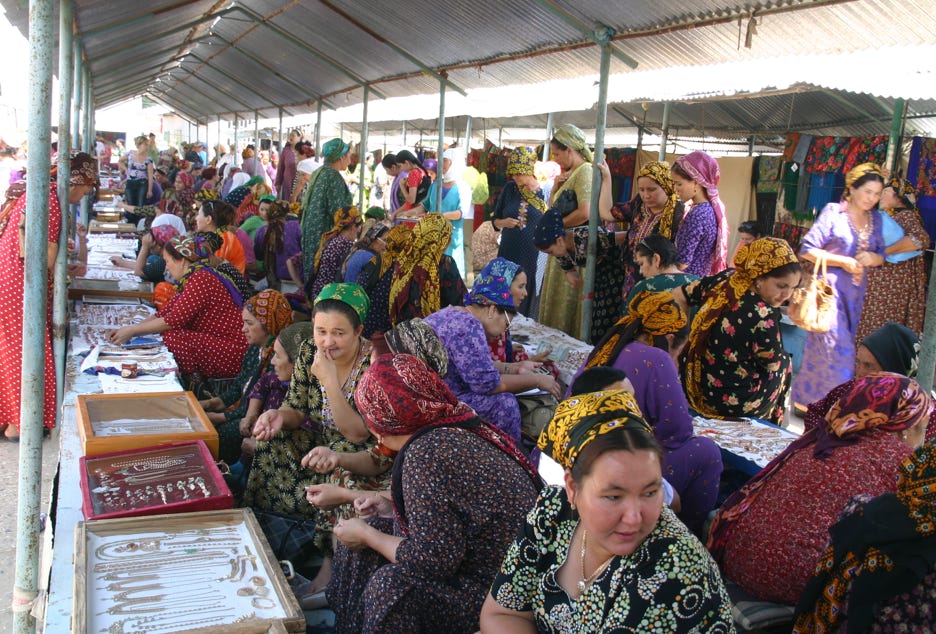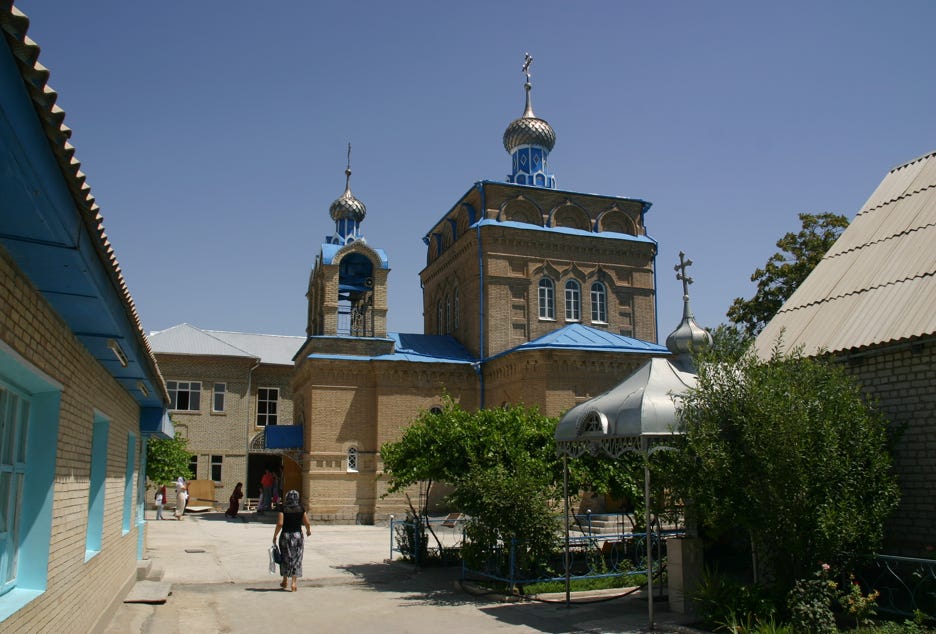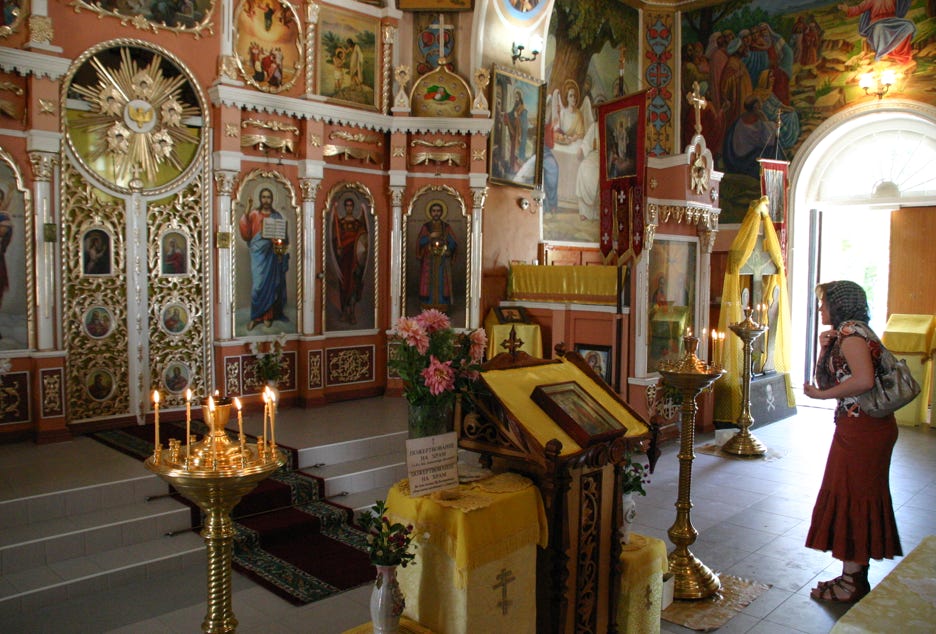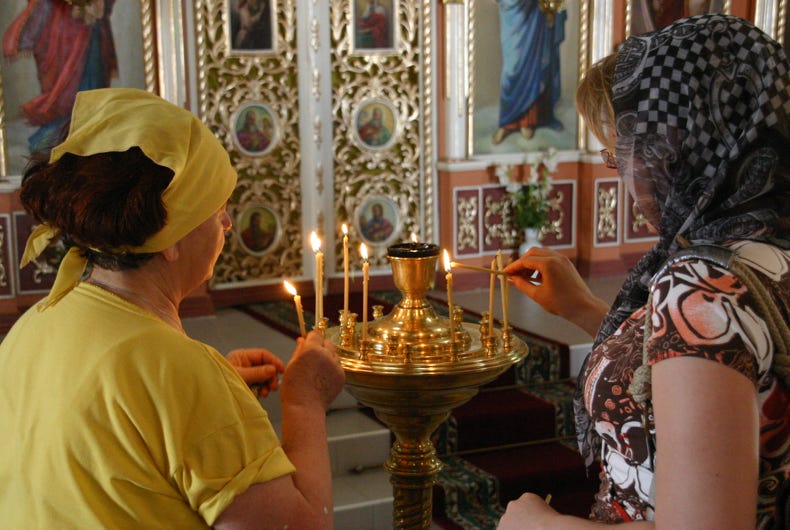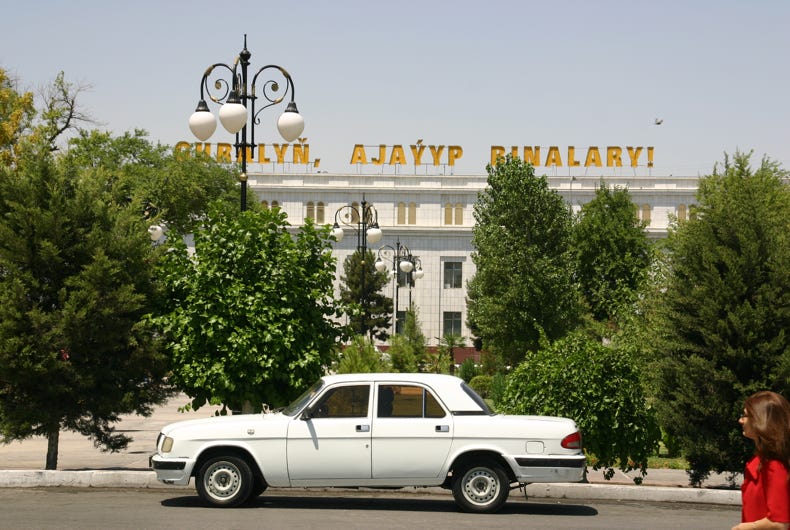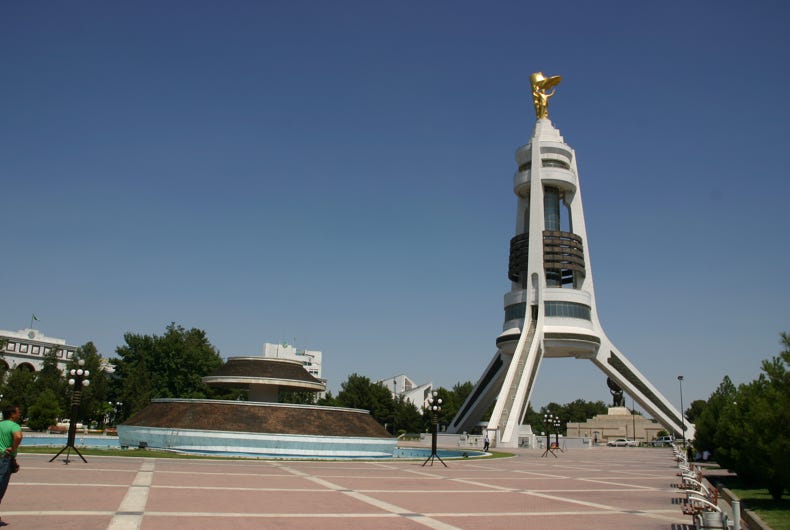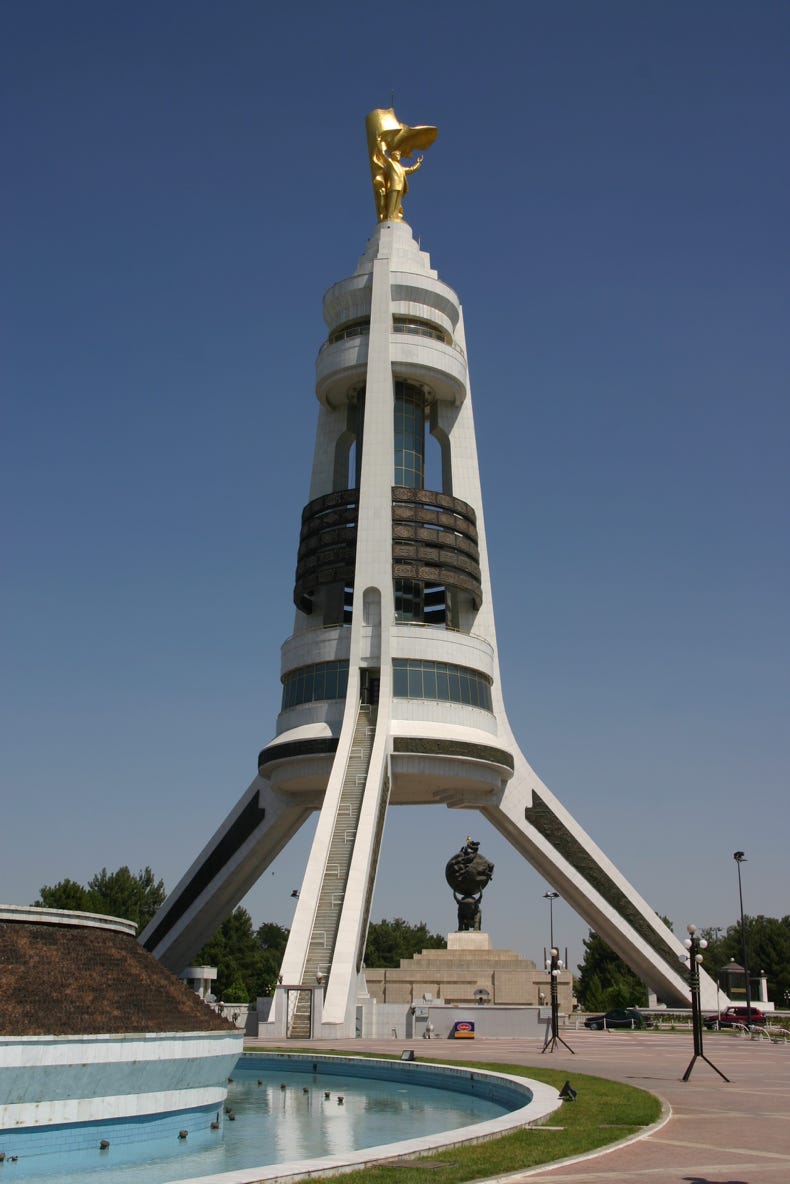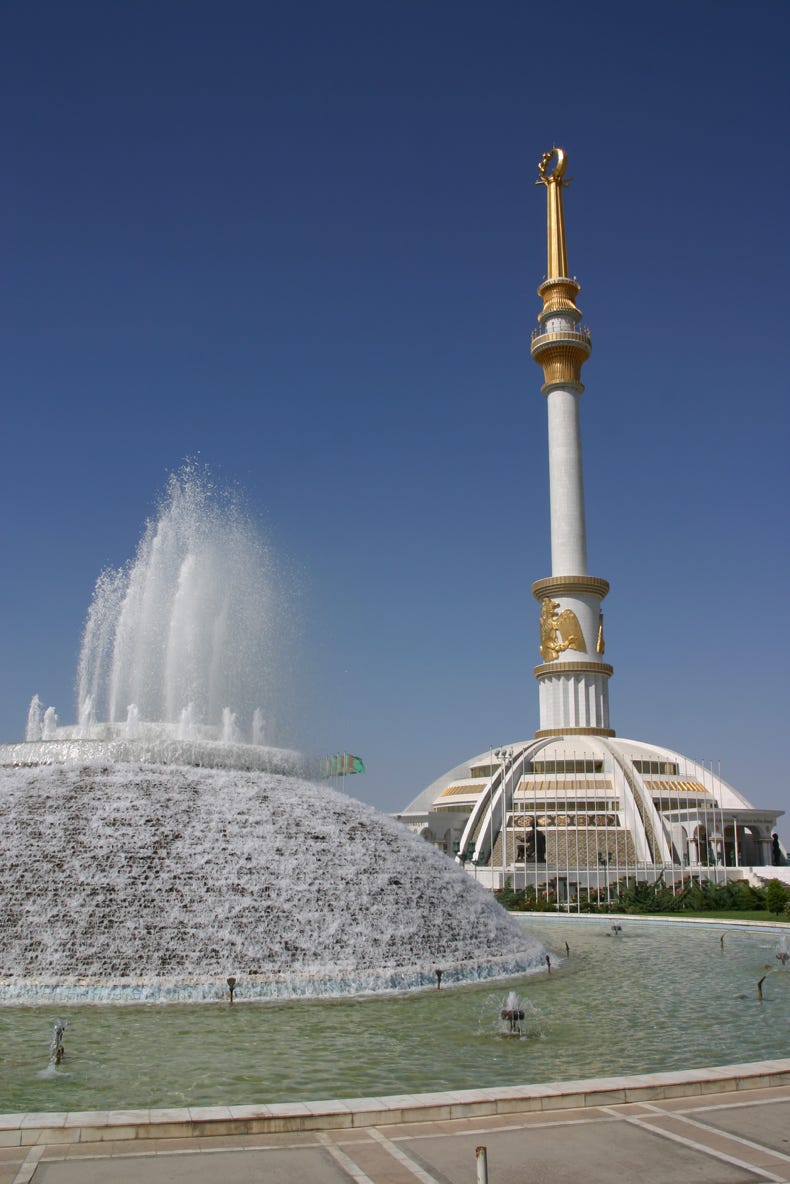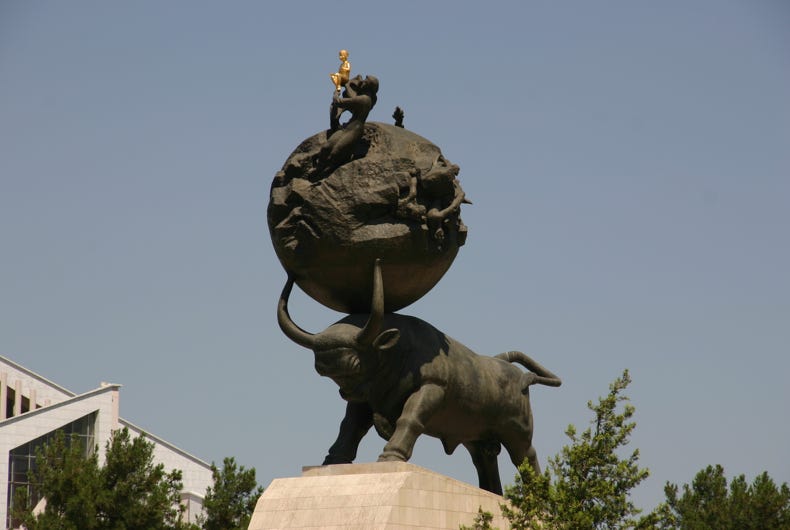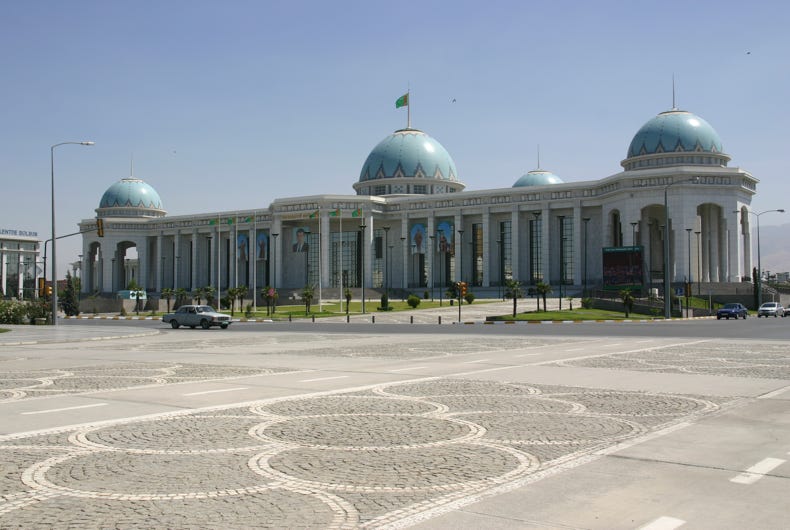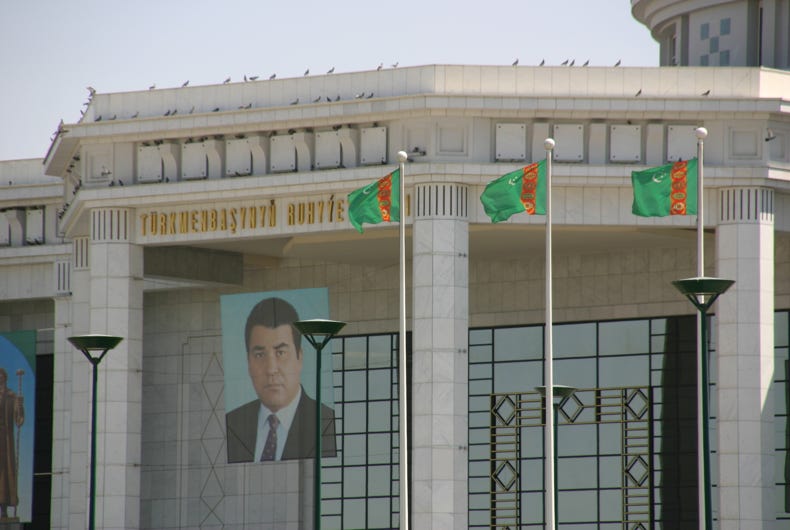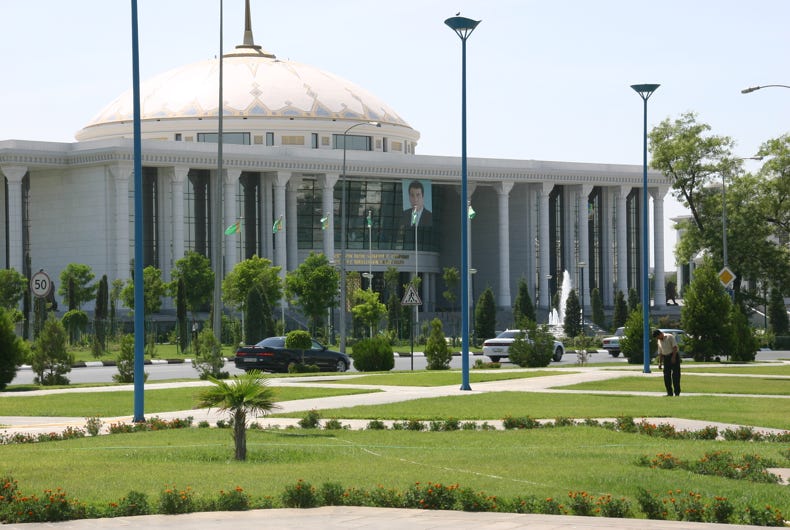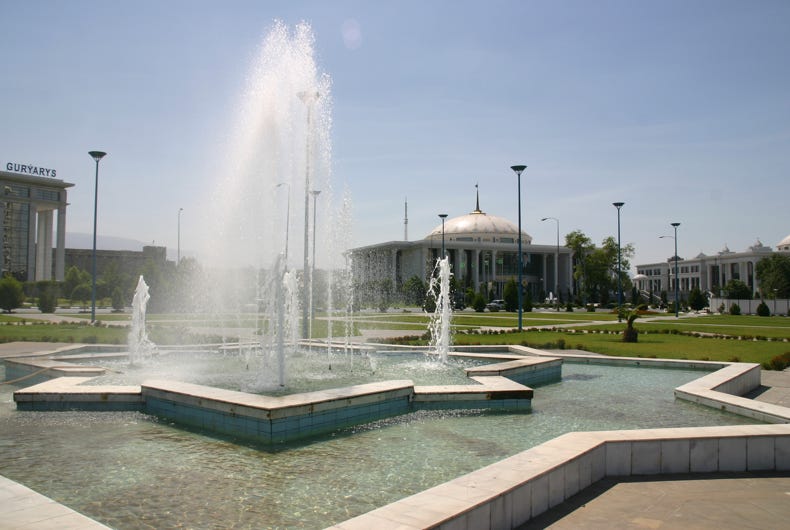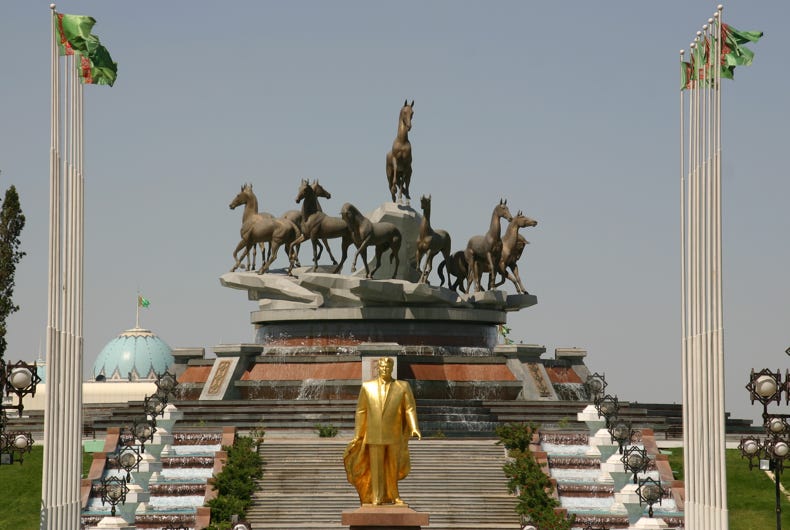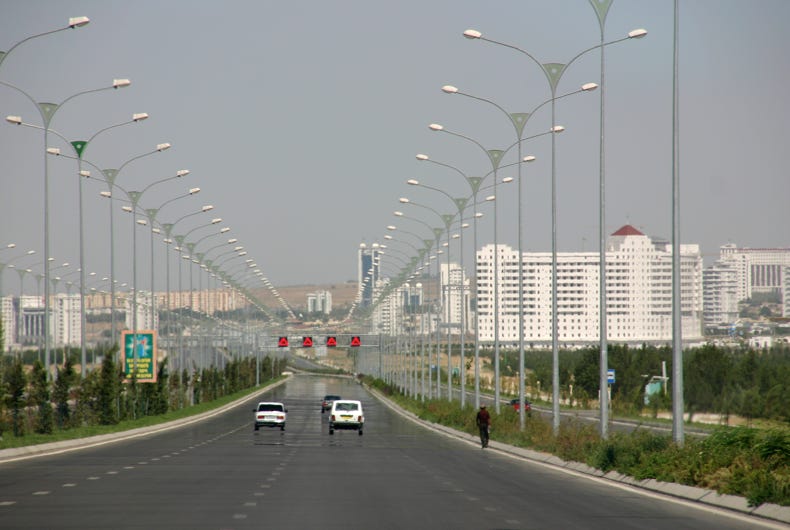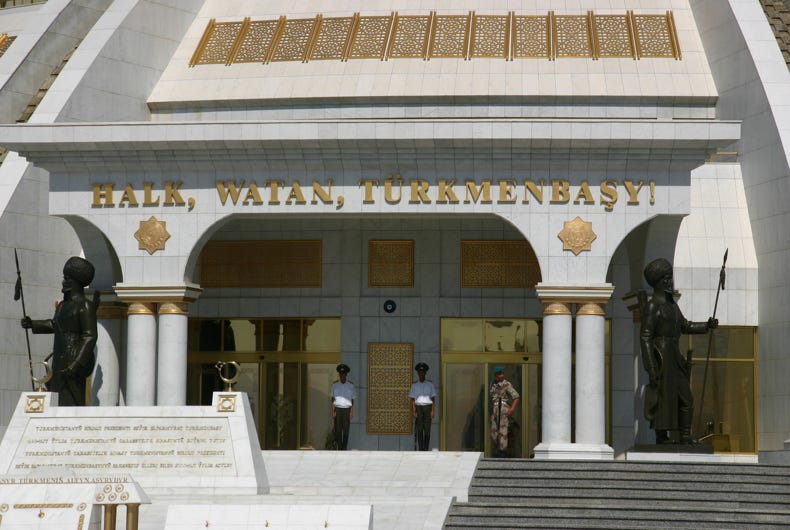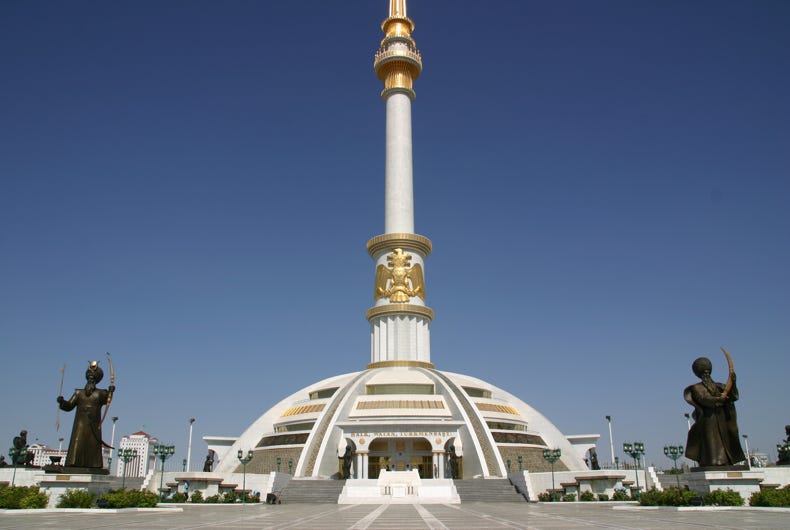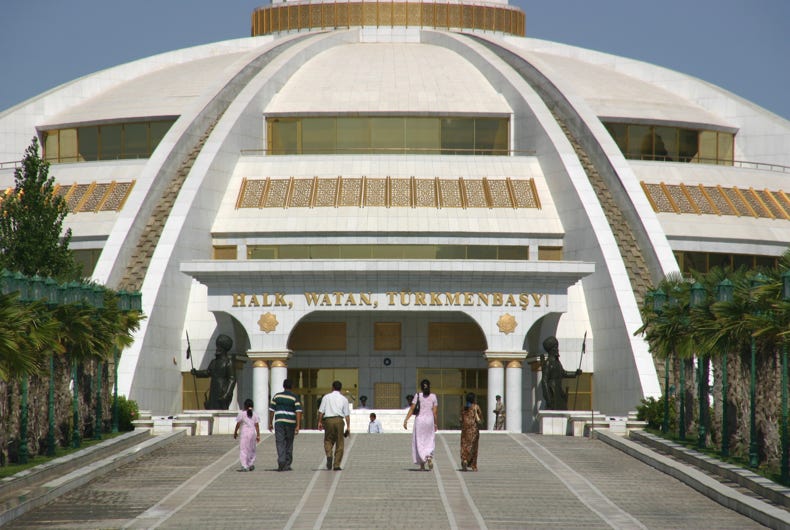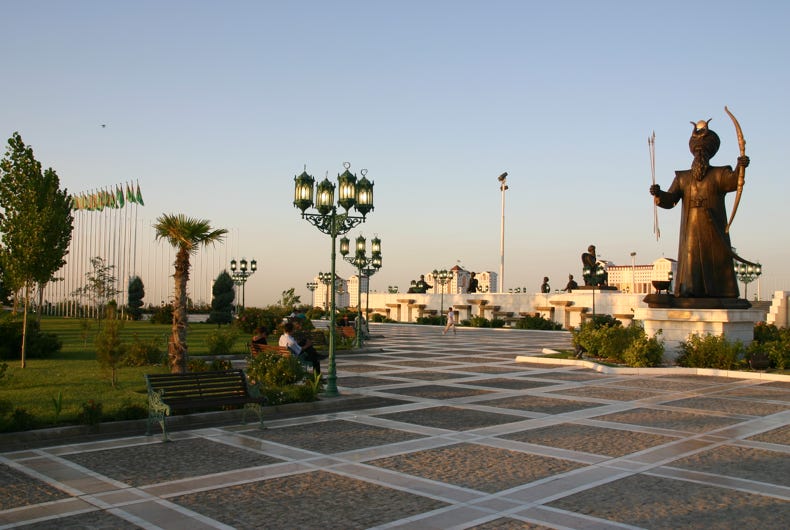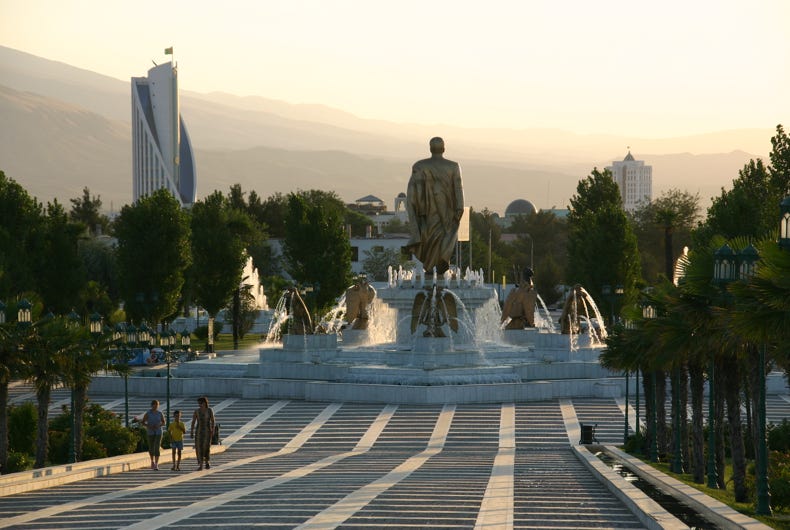
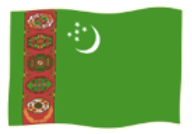
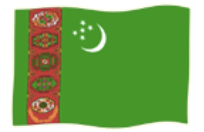

We had a fairly leisurely start to the day, waking at 7:30 am and going to breakfast at a little after 8 am. It seems that there are only five guests in the hotel; Andy and me, David (who slept through breakfast and had to be woken up half an hour after our scheduled departure time) and another English-speaking couple. Oh yes, and a small rat that I saw from time to time scurrying away from me in the bathroom. Breakfast was served to the table, and comprised two small scones with melted cheese and pressed meat, some tomato, a slice of cheese, some extra scones and coffee (one cup) or green tea (a large pot).
We had arranged to leave at 9 am, but Oleg was 10 minutes late, and then we had to wait for David. Thus, it was 9:40 am before we finally got underway. Our first stop was the Tolkuchka Bazaar on the edge of the city. This was a large and very colourful market held every Thursday, Saturday and Sunday where local people sell everything from melons to carpets to gold to hair shampoo. It is said to be the largest such market in central Asia after Kashgar (China), and it provided a wonderful experience of traditional Turkmen life.
After this great experience, we returned to the city, or more specifically, to the Soviet-built section. Asghabat falls into two main parts , neither being very old because the city was largely wiped out in a huge earthquake in 1948. Although it is filled with Soviet-era buildings, the Russian section is on a more human scale than the huge, white post-independence (ie post-1991) buildings that are now being built to create a new Ashgabat.
Our first stop was the Alexander Nevsky Cathedral, a lovely old Russian Orthodox church where we were fortunate to witness a baptism. Our other purpose in visiting the lovely, shady Soviet section of the city was to stock up on fruit and drinks at the Russian market. We also used the visit to stop by the bookshop and buy the two-volume set of the President's book 'Rukhnama', plus a beautiful pictorial book of Turkmenistan, or more specifically, the President's contributions to modern Turkmenistan.
I also bought some postcards, which meant our next stop was the post office. In Turkmenistan, postcards cannot be sent unless inside an envelope, so we bought the envelopes, wrote the cards and posted them.
That was when the 'fun' began. I snapped a quick picture of a lovely Soviet-style building with a Volga car parked in front and a woman walking past – without realising I had just unwittingly photographed the city's KGB Headquarters (or, as it is now known in Turkmenistan, the 'Community for National Security'). The act immediately resulted in a half hour detention, which was eventually resolved with the "Pictures Expert" arrived, looked at the photos I had been taking that morning (he seemed quite impressed by the quality :-) ) and then asked me to erase the offending image, which I did. My name, passport number and date of birth were duly recorded, so presumably I now have the dubious "honour" of having a KGB record or file with the Turkmenistan KGB.
After this experience, Oleg (my minder) became very quiet, but as it was about 2 pm, we headed off for a Turkish-style lunch at the very impressive Yimpas shopping centre. Built several years ago by a Turkish company, it boasts Turkmenistan's only escalators. Fortunately, lunch loosened us all up somewhat, and we were soon ready to explore Berzengi, the new southern section of Ashgabat modelled on the edicts of the President.
Berzengi certainly looks impressive, with its seemingly well-finished white high-rise housing blocks – until you learn that 80% of them are empty and yet the rapid pace of building continues. And then there was the change of policy concerning private houses, which were approved 8 years ago, but which have recently been banned, resulting in the bulldozing of all the new private homes.
In addition to the white marble buildings (all new buildings must be faced with white marble, apparently from Italy), the new city is characterised by huge parks with manicured gardens, ornate fountains and sculptures of Niyazov, one such park being built every year since independence in 1991. The surprising thing was that so few people were seen in these very attractive (if sometimes overwhelming) open spaces, at least until dusk.
We made a few stops to inspect the grand new monuments devoted to the President. First was the Arch of Neutrality, a huge three-legged high arch erected in 1998 to celebrate Turkmenistan's adoption of an official foreign policy of neutrality. The Arch was topped by a gleaming 12 metre high statue of Niyazov (the President) which revolves through the day so that it always faces the sun.
Until last month it was possible to go up to a viewing platform near the top of the spire of the arch, but this was stopped, presumably to stop people photographing the nearby Palace of Turkmenbashi or the associated government buildings of the Ministry of Fairness and Ministry of Defence, both of which were also off-limits to our cameras.
Next to the Arch of Neutrality was the Memorial to the 1948 Earthquake that flattened most of Ashgabat. Although the exhibition inside was closed a month or two ago, we could see the large statue on the roof of a bull (representing the earth), with a woman sitting on its back (representing Niyazov's mother) holding up a baby in polished shining gold (representing President Niyazov).
Following a non-photographic walk through Independence Square and back to the vehicle, we drove along the President's Highway, which was undoubtedly the best road we had seen in Turkmenistan, and one of the best roads we had ever seen anywhere.
Perhaps not coincidentally, the road led from the city to the President's residence, and passed a number of interesting buildings including the lavish National Museum and an orphanage donated by Saudi Arabia. We finished the drive at the foot of the Walk of Health, which comprises two flights of steps over the mountains, one 8 km long and the other 37 km, built on the orders of Niyazov so that all public servants could perform their annual walk of health.
The tour of new Ashgabat ended at Independence Park, the large park near our hotel where Andy and I walked the previous night. It was interesting to see the largest monument, the Monument to the Independence of Turkmenistan (shaped like a giant plunger according to some people) at a different time of day, and to have the words and symbolism explained to us. Particularly interesting was the inscription on the front, which was the same as we had seen throughout Turkmenistan – The Country, The People, The President.
We returned to the hotel at 4:30 pm, and after a few hours rest we decided to return to the park for an evening constitutional. We finished up staying for two hours, watching the lights come on before returning to the hotel, narrowly avoiding a vicious attack by a wild dog, getting back at 9:20 pm.

